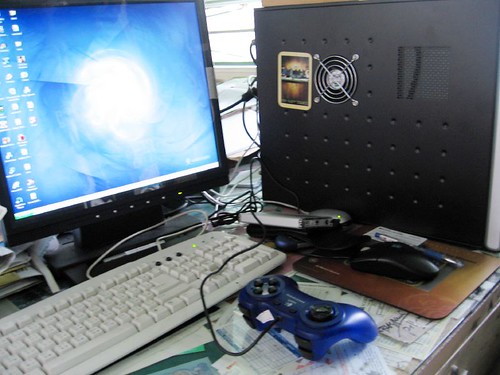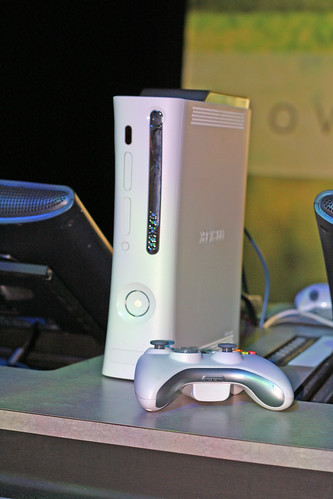This is a guest post! If you want to write for us, check out the Guest Post section.
The desktop computer changed the world. Combined with the power of the Internet, our lives today are exponentially more advanced than they were just three decades ago. From basic things that we take for granted like desktop publishing or saving our own digital images to more advanced features like how we interact with others on email and Facebook, computers have revolutionized our world.

[via Flickr]
Yet, as revolutionary a device as it has been, the desktop computer may be looking at the end of its lifecycle. There are some strong signs that suggest that – over the course of the next decade or two – the desktop computer may become something of a dinosaur.
Here are some signs that may be signaling the death of the desktop:
The Proliferation of smartphones

[via Flickr]
Sometime in the middle of 2011, the scales tipped. More people were using smartphones than were using regular cell phones. Smartphones can’t do everything that a desktop computer can do, of course. They’re limited by relatively small screens.
Yet, much of what we do on a daily basis with our desktops can be replicated with our smartphones. Some people, for example, have given up checking email on a computer altogether, preferring to use a smartphone. The same goes for social media.
In addition, smartphones offer a convenience that desktop computers don’t. If you’re sitting around the table at a restaurant and trying to remember who starred in a recent film, you can simply pull out your iPhone, browse to your favorite movie database website, and find out in moments.
By themselves smartphones won’t replace desktops, but they aren’t the only devices emerging.
The emergence of tablets

[via Flickr]
Starting with the iPad, the marketplace has seen a strong growth in tablet computing. With an iPad, Android tablet, or Windows Tablet, you can do quite a bit more than what you can do with a smartphone alone. For example, some tablets are capable of allowing you to edit images, and do a variety of publishing activities that have normally been reserved for the desktop.
The larger screen of the tablet also gives you more options in terms of what you can actually do with it, allowing you to replicate many more tasks that, formerly, were reserved for your desktop.
Advances in entertainment technology

[via Flickr]
Embedded processors allow today’s televisions, gaming consoles, and Blu-Ray players to do much more than those of just a decade ago. There are televisions with built-in web browsers, some that integrate with your email to give you notifications of a new email when you’re watching a TV show, and more.
Streaming technologies have made this an even more exciting time, as you can for example stream your favorite television shows or movies right to your TV today. Five years ago, you’d have needed a computer in order to stream that kind of media.
The proliferation of cloud solutions

[via Flickr]
Cloud computing is changing the way we think about technology, as well. When you use a cloud storage provider like Dropbox, for example, you free your data from the confines of your desktop computer’s hard drive. You can access your files from anywhere – your smartphone, a tablet, perhaps even your television. You no longer need that in-home storage space.
What’s more is that cloud technologies are proving to be more reliable than desktop technologies. If your computer gets a virus and your hard drive crashes, you might have a hard time getting your files back. Cloud solutions protect you from those kinds of incidents.
Laptops as a transitional technology

[via Flickr]
There is one school of thought that suggests that the fact that laptops now outsell desktops in the consumer market is one area that proves the desktop is going away. As laptop users transition to tablets, for example, this might well be an indicator. Time will tell on this issue, of course.
Why you’ll still need a desktop
There will still be some functions in which you’ll need a desktop – or at least some computing device that behaves like a desktop. For example, high-resolution graphic design works best on a large screen that would be impractical for a tablet. Until tablets develop full point-and-click editing capabilities like desktops have (which may not be too far off) you’ll probably want to use your desktop for most word processing tasks, as well.
The desktop isn’t going to disappear tomorrow. However, with each new purchase you make that’s using embedded technologies such as the devices and solutions described above, you’re helping hasten the death of the desktop. And that may not be a bad thing, after all.
Author Bio:
Nick Simpson is Social Media Coordinator at Kontron, a leading designer of the industrial computer and panel PC, including the industrial PC.
Warning: count(): Parameter must be an array or an object that implements Countable in /home/u265766359/domains/maheshkukreja.com/public_html/wp-content/themes/thesis_189/lib/classes/comments.php on line 43
{ 0 comments… add one now }